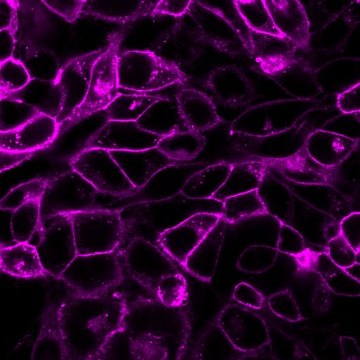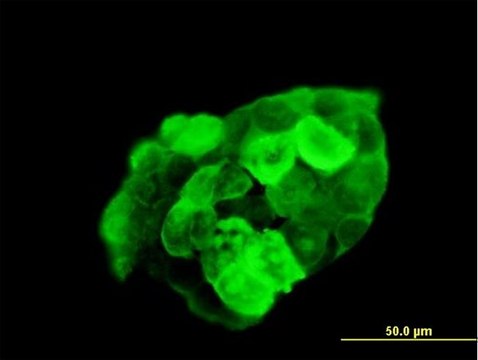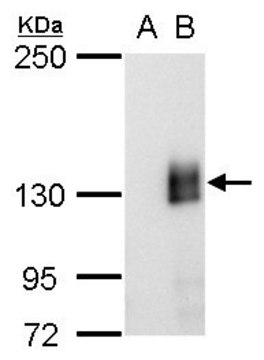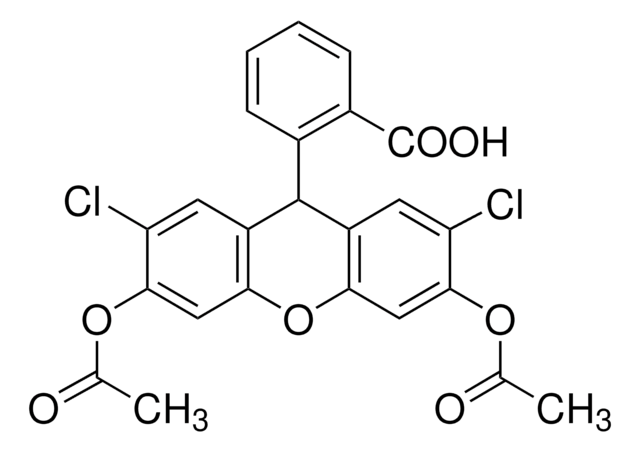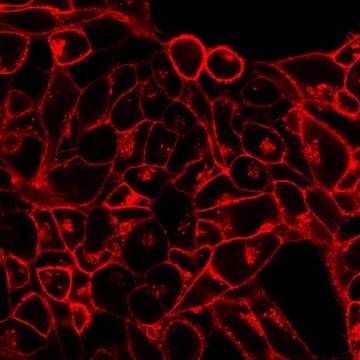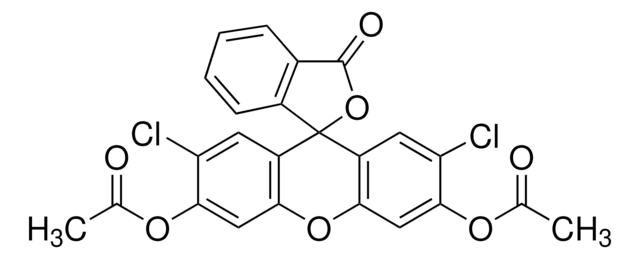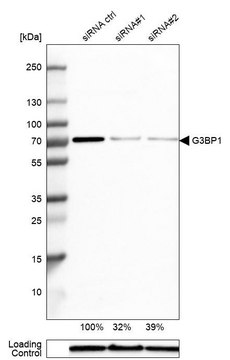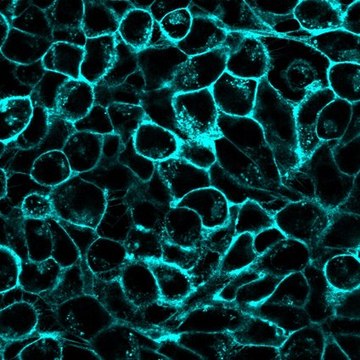07-1801
Anti-G3BP1 Antibody
serum, from rabbit
Synonym(s):
ATP-dependent DNA helicase VIII, GAP SH3 domain-binding protein 1, GAP binding protein, GTPase activating protein (SH3 domain) binding protein 1, Ras-GTPase-activating protein SH3-domain-binding protein, RasGAP-associated endoribonuclease G3BP
About This Item
Recommended Products
biological source
rabbit
antibody form
serum
antibody product type
primary antibodies
clone
polyclonal
species reactivity
mouse, human
species reactivity (predicted by homology)
rat (100% immunogen homology)
technique(s)
immunoprecipitation (IP): suitable
western blot: suitable
NCBI accession no.
UniProt accession no.
shipped in
wet ice
target post-translational modification
unmodified
Gene Information
human ... G3BP1(10146)
mouse ... G3Bp1(27041)
General description
Specificity
Immunogen
Application
Signaling
RNA Binding Protein (RBP)
Quality
Western Blot Analysis:
1:1,000 dilution of this antibody was used to detect G3BP1 in HeLa, 293T and S10 cell lysates.
Target description
Physical form
Storage and Stability
Analysis Note
HeLa cell lysates.
Disclaimer
Not finding the right product?
Try our Product Selector Tool.
Storage Class Code
10 - Combustible liquids
WGK
WGK 1
Certificates of Analysis (COA)
Search for Certificates of Analysis (COA) by entering the products Lot/Batch Number. Lot and Batch Numbers can be found on a product’s label following the words ‘Lot’ or ‘Batch’.
Already Own This Product?
Find documentation for the products that you have recently purchased in the Document Library.
Our team of scientists has experience in all areas of research including Life Science, Material Science, Chemical Synthesis, Chromatography, Analytical and many others.
Contact Technical Service